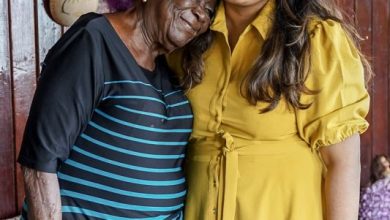When dance was an answer to racism

“The Swans of Harlem: Five Black Ballerinas, Fifty Years of Sisterhood, and the Reclamation of a Groundbreaking History” by Karen Valby
c.2024,
Pantheon
$29.00
304 pages
Not one movement is wasted.
Every turn of wrist, every finger curl, every softly curved step is loaded with meaning. Though there are no words to accompany this dance, the story it tells comes through loudly. You can’t take your eyes off the ballerina on the stage, or her elegance or, in the new book “The Swans of Harlem” by Karen Valby, her history-making presence.
In the 1950s, long before the Civil Rights Movement, little Black girls could certainly be found in ballet classes in America but their dreams were always squashed. They were pointed toward jazz or modern dance in short order, or were bluntly told that they’d never be ballerinas.
Dancer Arthur Mitchell didn’t listen to that. “His work ethic was his superpower,” says Valby, and when presented with an opportunity with The Harlem School of the Arts, he seized it. He would “build an internationally renowned school that would” show the world that ballet had nothing to do with skin color. He started looking for dancers.
Lydia Abarca was still a teenager when she met Mitchell, and she ultimately became his go-to dancer at the Dance Theatre of Harlem (DTH). Llanchie Stevenson would dance for Mitchell until she converted to Islam as an adult. Gayle-McKinney-Griffith left Julliard to dance for him. Twenty-seven-year-old Sheila Rohan was much older than most beginner ballerinas; she was also the mother of three kids but with the help of an older sister, she joined the DTH. Marcia Sells moved to New York City from Ohio to dance; Karlya Shelton came from Denver.
Swans of Harlem author, Karen Valby.Photo by Anna Krachey
Says Valby, it would’ve been so easy for any of them to go home when things got hard, to return to their families, and re-start live anonymous lives. Instead, they stayed for the “next curtain rising” and to blaze a path…
Not long ago, many sources insisted that Misty Copeland was “the first black ballerina.” It was, says author Karen Valby, all “Misty Copeland, Misty Copeland, Misty Copeland…” Yes, it’s true that Copeland was “the first African American woman to be promoted to principal dancer at American Ballet Theatre.” She wasn’t the first Black ballerina, though. Not by a long shot, and “The Swans of Harlem” sets the record straight.
Valby begins by reminding readers what was at stake when her five ballerina subjects launched their careers, despite racism – but how they endured racial bias from beyond the curtains is just half the story. Valby touches lightly upon their private lives, and heavier on the trouble they had with their mercurial teacher who is, not-so-surprisingly, celebrated. So are many beloved male “danseurs,” some of whom died during the AIDS epidemic.
For the record, Copeland, too, is lauded here.
And that’s pretty appealing, because readers who expect rivalry, claws-out, and divahood in a tale like this will happily find less than they might predict. Instead, you’ll find a story that you’ll be glad you know now, one you’ll be satisfied to’ve read. So find “The Swans of Harlem.” You want it, so don’t wast a minute.




